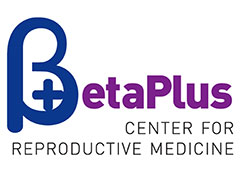Anomalies of the Reproductive Tract
What are anomalies of the reproductive tract?
- Anomalies are congenital disruptions of reproductive organs.
What leads to anomalies of the reproductive tract?
- They are developed due to aberrations in the development of the Müllerian ducts which are formed in week 5 of embryogenesis.
How common are anomalies of the reproductive tract?
- Around 1% of women suffer from them.
How are anomalies of the reproductive tract diagnosed?
- During pelvic examination,
- Using 3D ultrasound,
- Using hysterosalpingogram,
- By magnetic resonance imaging (MRI),
- By laparoscopy.
What types of reproductive tract anomalies are there?
- Hypoplasia or agenesis of the uterus – when the uterus does not develop at all.
- Unicornuate uterus – the uterus develops from a single Müllerian duct while the other atrophies.
- Uterus didelphys or double uterus – when both Müllerian ducts develop but do not connect.
- Bicornuate uterus – only the upper portions of Müllerian ducts are connected and the uterus is heart-shaped.
- Septate or arcuate uterus – two Müllerian ducts are partially connected and a midline septum is developed.
What are the symptoms in women with reproductive tract anomalies?
- the symptoms depend on the type of the anomaly:
- Hypoplasia or agenesis – primary amenorrhea, pregnancy is possible only through surrogacy.
- Unicornuate uterus – usually no symptoms until pregnant. Miscarriages, premature birth and pregnancy complications are often.
- Uterus didelphys or double uterus – usually no symptoms until pregnant. Miscarriages, premature birth and pregnancy complications are often.
- Bicornuate uterus – usually no symptoms until pregnant. Miscarriages, premature birth and pregnancy complications are often.
- Septate or arcuate uterus – usually no symptoms until pregnant. Miscarriages, premature birth and pregnancy complications are often.
Do the anomalies of the reproductive tract cause problems in pregnancy?
- A smaller septum is considered to cause more severe complications in pregnancy than larger anomalies of the uterus.
How are anomalies of the reproductive tract treated?
- Usually, no treatment is necessary, but a more intensive monitoring of pregnancy is.
- Surgically (depending on the type of the anomaly) by
- Laparoscopy,
- Hysteroscopy,
- Open surgery.




